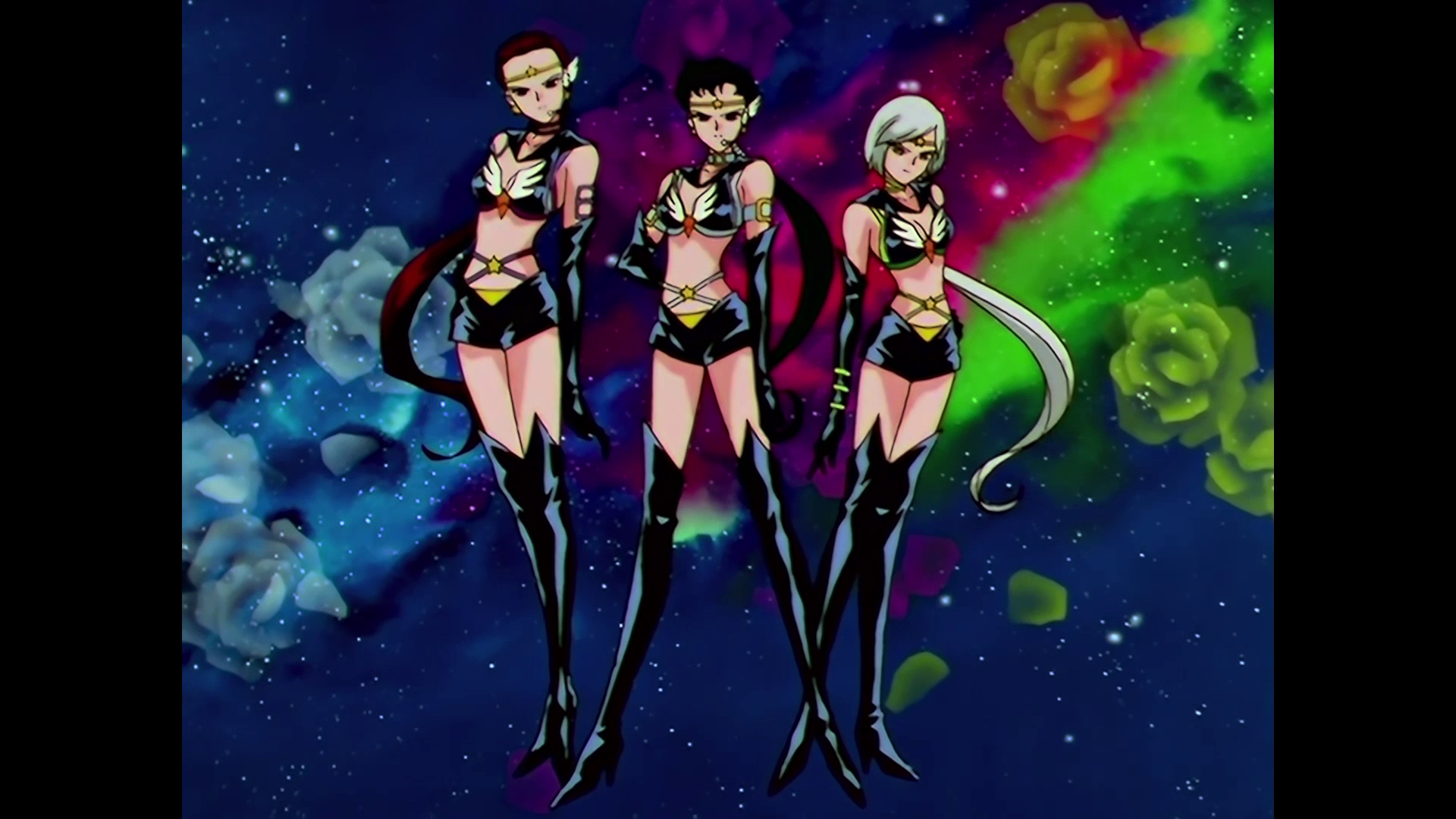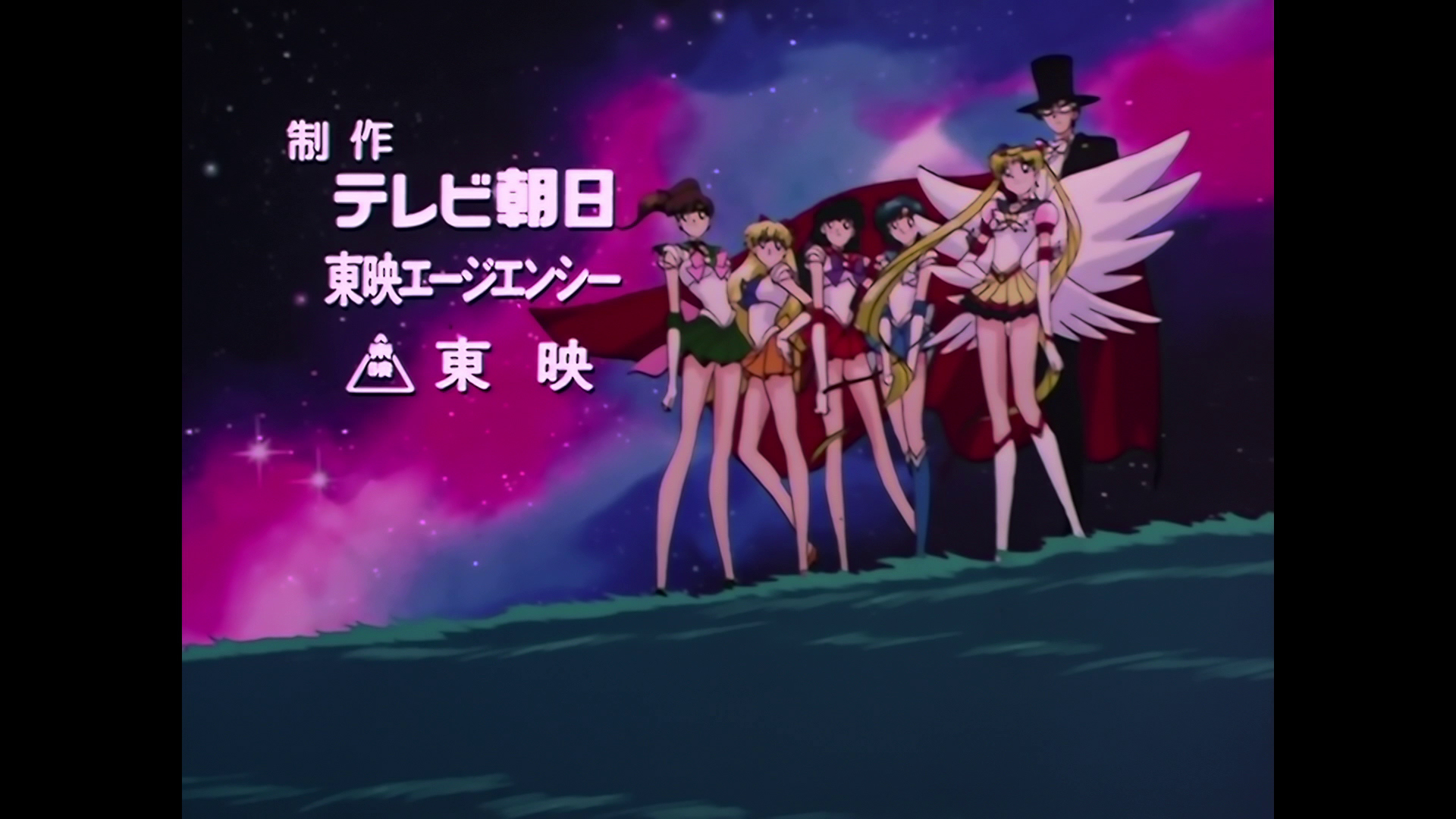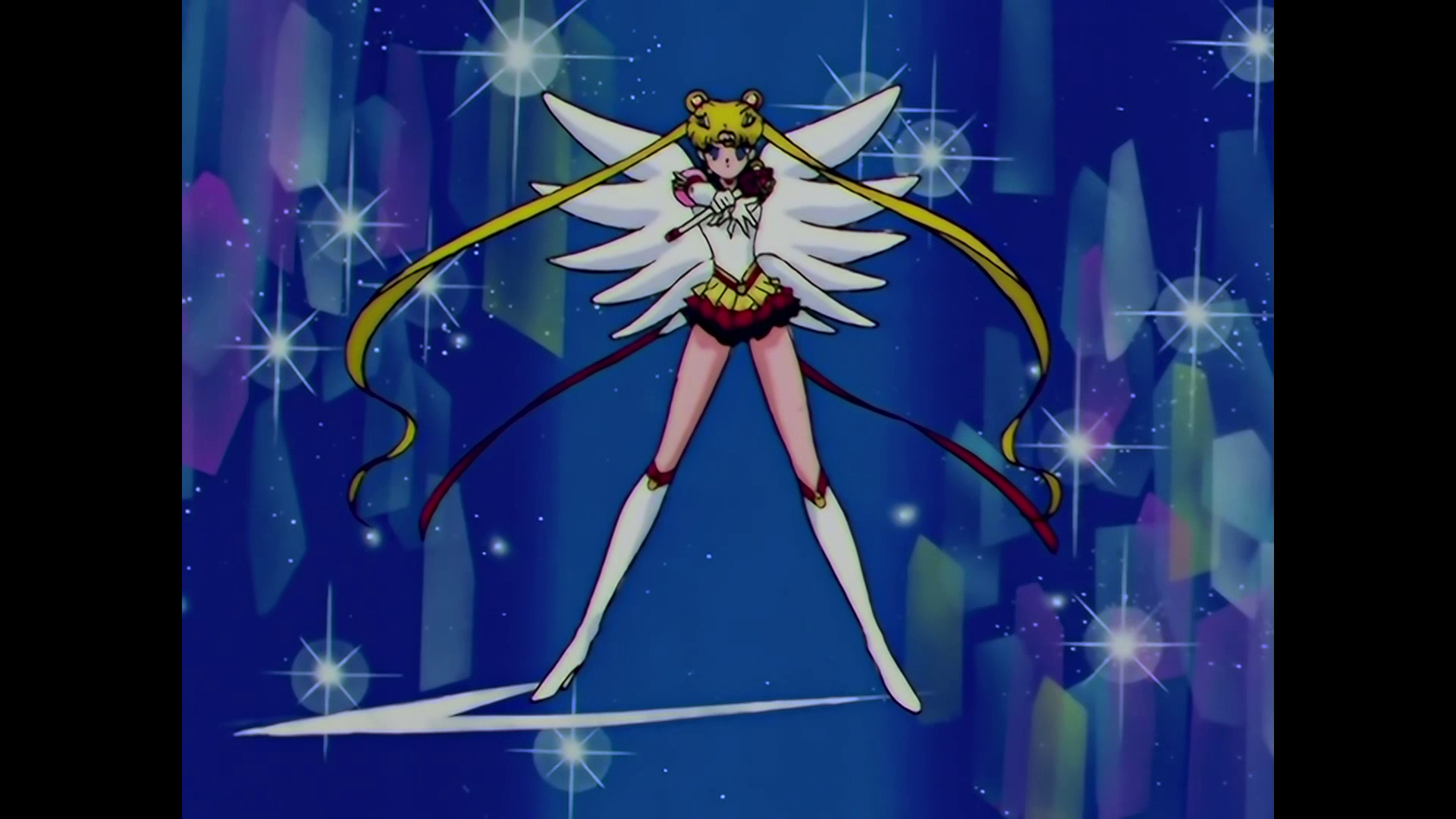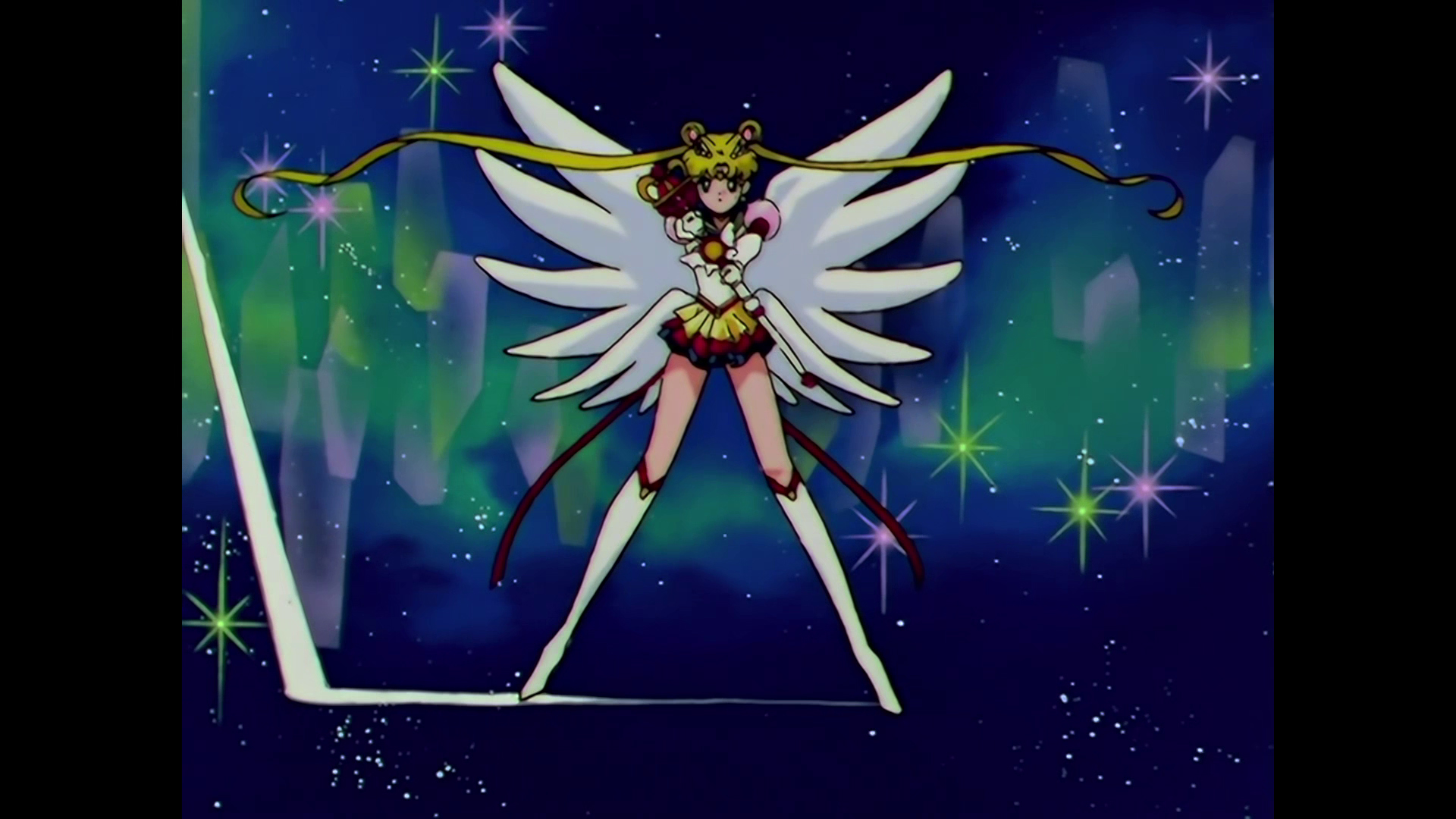
The Sailor Stars Have Arrived!
I never, ever, EVER thought I would be writing about this. It feels like just yesterday it was the early 2000s and there was literally no hope of seeing Sailor Moon ever appear in North America again. For those who have been at this as long as I have (which is over 25 years now), you may remember back when the license to Sailor Moon was due to expire and ended-up being revoked pretty much worldwide, except for Japan of course. There were a lot of theories surrounding why this happened, one of the more common ones being that author Naoko Takeuchi wasn’t receiving nearly as much kickback profit from foreign product releases as she felt entitled to. In addition to that, she did not have as much control or say over the materials being distributed. Again, this was just speculation at the time, but the end result was a lot of hurt and disappointment regarding the disappearance of Sailor Moon from stores and television. Most notably, while fans had already suspected they’d never see the final season of Sailor Moon dubbed and aired in Canada and the US, this move solidified that fact forever. Or so we thought!
So, you, who I’m assuming likes Sailor Moon, but isn’t crazy-obsessed like myself, are probably wondering why you’ve never heard of Sailor Stars. Better known formally as Pretty Guardian Sailor Moon Sailor Stars, this final season of the 90s Anime was never dubbed nor aired on TV in Canada and the US. There was never even a subtitled release for home-video, where else all of the other seasons were made available on VHS/DVD in both English and Japanese variations. As far as I know (and I welcome anyone to share with me any credible sources on this), there isn’t an official reason as to why the final season never debuted in North America, but there definitely are a plethora of theories. Let’s take this back to the beginning of the show’s history in North America.
If you haven’t heard of Toon Makers, then you’ll want to watch this video. Commonly referred to as Saban Moon (Saban Entertainment being responsible for the English Power Rangers and more titles), this early concept for Sailor Moon did not involve dubbing the original Anime; in fact, the idea was to do-away with the Anime altogether and recreate a brand-new show. Assuming you’ve watched the largely-entertaining video by now, the show was to be a blend of Americanized animation and live-action footage. On a list of things that thankfully never happened in show history, this is at the top for Sailor Moon fans. It’s unclear why this was the intended direction for the show to head in, but one guess is that the studios here wanted to showcase locally-made work as opposed to foreign animation, like Anime. At that time, Anime didn’t hit the mainstream hard enough as it later would towards the 2000s. From my childhood memories, I only recall Dragon Ball being on TV in Canada until Pokemon and Digimon showed up after. Now, what did all of these particular shows have in common while airing in Canada and the US? Well, they were heavily edited and far from uncut. Sailor Moon ended up being licensed to a company named DIC Entertainment (whose parent company was Walt Disney Studios) and I feel like that alone says enough. Needless to say, if you grew up watching the show like I did, then no doubt you remember this: “Fighting evil by moonlight, winning love by daylight…” While this catchy and iconic theme song may have been one thing not too different from the original, Sailor Moon was immensely stripped of a lot when being edited for North American audiences. Even though the Anime was considered to be acceptable for a child audience in Japan, by North American standards it needed a degree of censoring and cultural appropriation. For starters, the music was all changed over to newly-composed pieces including a library of replacement vocal songs for certain episodes. The 46-episode first season shrank as some episodes never made the cut for North America or were combined with other episodes based on the severe amount of edits. Notably, the animation lines were blurred in the transformation sequences to undercut the nudity, and some of the dialogue was scrapped altogether, like the infamous “Make-Up” chants that were yelled out by the guardians before transforming. In case the word solider was too strong, the girls were referred to as the Sailor Scouts, with almost all of the character names changed to English names as well. Perhaps one of the more clever (and deceitful) changes was to Zoicite’s character, the one female member of the Negaforce who was in a relationship with Malachite (renamed from Kunzite). It’s funny to me that I NEVER realized back then that DIC turned Zoicite into a woman quite easily. I think it worked so well because of how effeminate Zoicite’s mannerisms were to begin with. Yes, you read that correctly; Zoicite was originally a male and in a homosexual relationship with Kunzite, meaning there were no female generals in the Dark Kingdom. This wouldn’t be the first time that gender-bending occurred in the North American dub to circumvent the sexuality norms of that time. Finally, any violent or vulgar scenes were cut out from the show, while simultaneously DIC opted to add in their own small animations and segments, like Sailor Says. DIC would continue to dub and edit the second season, Sailor Moon R, and the three theatrical movies, R, S, and SuperS.
This iconic version of Sailor Moon became the classic that many people around the world grew familiar with. The fact is, a lot of people know her better by Serena than Usagi, and there is nothing wrong with that! I remember that Sailor Moon had stopped airing new episodes and even came off the air for small period of time when I was a child, but then it had suddenly returned out of nowhere. However, these new episodes of Sailor Moon were notably a bit different… For reasons still unknown to me, Cloverway (whose parent company turned out to be Sailor Moon’s original animation studio TOEI Animation) took over the dubbing of the third and forth seasons, Sailor Moon S and Sailor Moon SuperS. What exactly did that mean? While both DIC and Cloverway had contracted Optimum Productions to handle the dubbing for Sailor Moon, it was the latter company that gave Optimum more creative latitude with the show. While that sounds like an invitation to run wild, the result was quite the opposite of what DIC did; this became our first taste of a more uncut Sailor Moon experience. For starters, besides continuing to use the DIC-produced theme song, Cloverway kept the original Japanese background score intact. This was an odd adjustment for many (myself included) who were used to hearing this instead of this. The other big change was the sudden loss of the original cast, giving the show a different feel to it. While Cloverway took some pages out of DIC’s playbook, like gender-swapping Fisheye and turning Sailor Uranus and Sailor Neptune into “cousins” instead of a lesbian couple, this time no episodes of were skipped over in the dubbing process and the English audio-track was a match for the Japanese audio-track. This allowed for a Bilingual dual-audio home video release that included the uncut Anime, released by Pioneer/Geneon Entertainment. Pioneer/Geneon had also released uncut dual-audio English/Japanese versions of the 3 movies too, thus giving a conclusive end to the Sailor Moon Anime so far (with the only missing pieces being the SuperS TV special, Make Up! Sailor Guardians special, and Ami’s First Love special). This immediately created an imbalance with the first and second seasons wherein some episodes were never dubbed into English. That being said, at the very least, ADV Films released the uncut Japanese episodes into two sets (minus episode 67 from Sailor Moon R), but this only included mono-quality Japanese audio that was never meant to be heard given that DIC’s objective was to dub over everything in sight.
Now that the history lesson is over, you might be wondering two things: 1) Why did I tell you all of this nonsense, and 2) Why was there no mention of Sailor Stars? The answers to both of those border on lot of what was mentioned above. Again, there isn’t an official reason as to why Sailor Stars never made it to North America, so speculation is the only route for us to go. These are the theories:
Quality of the Work
One of the things I didn’t mention earlier was that in both the history of DIC and Cloverway’s run, Sailor Moon was produced under a very tight schedule and budget. Multiple episodes were recorded over long days with only room for one or two takes max. It’s easy enough to tell from the editing alone that there was such a lack of care put into the edits and even continuity of the story line. It is very-much a possibility that at the turn of the decade when dubbed Anime was headed in the direction of being purely uncut that TOEI Animation may have looked back on Sailor Moon’s North American history and felt it was “butchered”. We know for a fact that Naoko Takeuchi was not impressed by the lack of involvement or say she had with the Anime in the 90s, so for all we know, this distaste could have been extended to the various dubs as well.
Licensing Rights
Another simple explanation to this could be that the price of licensing another season of Sailor Moon outweighed the benefits. Partway through the dubbing of Sailor Moon R, it was determined that the show was not getting the correct viewership and ratings, thus leading to the sudden re-arrangement of licensing . While Sailor Moon is historical now, at the time it may not have always garnered the desired success, especially in the later years. In the DIC-era, many Sailor Moon toys and figures were marketed, but that seemed to decrease as Sailor Moon S and SuperS aired. In the end, it might just have boiled down to the final season being an unnecessary expense to pay to license.
Advanced Gender Roles
Out of all the theories out there, I feel like this is the one I believe the most. As mentioned above, DIC and Cloverway managed to circumvent some of the gay/lesbian characters in the first 4 seasons of the show. Zoicite and Fisheye were changed from men into women (though there will always be this blunder), and our favourite resident lesbians were turned into affectionate family members. Sailor Stars introduced three new Sailor Guardians from a distant galaxy, now on Earth to aide Sailor Moon in her battle against a common enemy. The Sailor Starlights were three women who would masquerade as men while on Earth in civilian form in the hopes to find their long-lost Princess. While that was the simple premise in the Manga, the Anime took it a step further by making their physical anatomy that of men who would then transform physically into women (see below). Suffice to say, if studios like DIC and Cloverway thought gay and lesbian characters were a hard pill to swallow in the 90s, I can’t imagine there was enough room for what we could class as transgender characters. In similar fashion, there wouldn’t have been an easy way to explain around it as one of the Starlights, Seiya, had developed feelings for Sailor Moon as a man, but was in soul a woman.

Death, Nudity, and More
I think up until this point, I’ve refrained from spoilers, so I’ll try my best not to end the streak here. Sailor Stars had some rather peculiar content setting it apart from the first 4 seasons. The episodes dove deeper into the revenge stories and contained more violence than usual (I’ve added a clip below that showcases this). The closeness between Uranus and Neptune was amplified in this season, thus making the cousin fib harder to explain. One of the Sailor Starlights utilized the attack phrase, Star Gentle Uterus. Characters in this season actually faced death, and not just temporary deaths either. Perhaps the BIGGEST challenge in dubbing this season into a children’s show? There is a very critical episode where Sailor Moon flies around completely nude. No, she’s not covered in patterns like during the transformation sequences nor does she have any underwear on… everything is out and about, and it lasts for a while (as seen below). I’m willing to bet that out of all the theories I provided, this one was the nail in the coffin at the time.

Take your pick at any of the above because surely they all contributed to the long delay in Sailor Stars’ North American debut. Yet, unbeknownst to us all, TOEI Animation would suddenly decide after the 20th anniversary of Sailor Moon that it was time for the series to shine again. The pandemonium first began with a slew of new Sailor Moon merchandise going on sale and the original series heading to air again in Japan. The Sailor Moon Musicals were revived after a long-standing hiatus, and many popup shops with Sailor Moon themes started appearing in various spots throughout Asia. Perhaps the most exciting anniversary news of all was the announcement of a new Sailor Moon Anime series, Sailor Moon Crystal. While that’s a topic for another day, the news of Sailor Moon Crystal renewed hope of breathing life back into the series on an international scale as the new Anime would be webcast online for everyone everywhere to watch. Then, the big news hit; in 2014, VIZ Media announced it licensed Sailor Moon for both the original 90s Anime and the new Anime, Sailor Moon Crystal! Furthermore, the biggest shocker was the announcement of a brand-new definitive home video release of ALL 200 episodes onto Blu-Ray for the first time with an all-new English dub. This would also extend to include the 3 movies and Sailor Moon Crystal with new dubs as well. Fans of Sailor Moon rejoiced everywhere because this meant a couple of golden things:
- An uncut English dub for the first time in 22 years! All that gender-bending and renaming finally would be rectified.
- Every single episode in one collection. As mentioned above, many episodes were never dubbed before, but some were not even released outside of Japan. There would finally be one consistent and complete collection.
- SAILOR STARS!!! Not only finally dubbed in English, but also released for the first time in North America PERIOD!
So, flash forward and here we are in 2020. It took YEARS, but VIZ has finally dubbed and released all sets of the original Sailor Moon Anime onto Blu-Ray/DVD. The episodes are also available on Hulu, Google Play, PlayStation Store, and more online services as well. I’ve rambled on long enough about the history of why you’ve never seen/heard of Sailor Stars, but it’s about time we finally talk about it.

In this fifth and final season of Sailor Moon, the girls all enter high-school and face their toughest challenges yet. The first 6 episodes bring back a familiar enemy, Queen Nehelenia, who is awakened from her silent bliss by an unknown presence. She reappears near Earth only to see that those of the light moon whom she hates so much are still alive and are living happily ever after. Enraged with jealousy, she shatters a curse across the Earth that drains the life out of infected individuals who become strangely attracted to their reflection in mirrors. Mamoru is one of said infected, and he slowly descends into madness when Nehelenia officially steals him away from Usagi as revenge. As Nehelenia starts to change destiny, Chibiusa begins to fade away from existence as Mamoru’s love continues to disappear. Meanwhile, a baby Hotaru is taken from her father and raised by the Haruka, Michiru, and Setsuna. A sudden growth-spurt turns her into a young girl overnight and she eventually becomes Sailor Saturn once again. The Outer Guardians come together with Sailor Mercury, Sailor Mars, Sailor Jupiter, Sailor Venus, and Sailor Chibi Moon to vanquish Nehelenia once and for all, but in a very unexpected way.

The second portion of the season introduces a slew of new characters, including a celebrity boy-band trio named The Three Lights. Seiya, Taiki, and Yaten enroll into the same school as Usagi and friends. As Mamoru heads off to University abroad, Seiya starts to grow fond of Usagi, causing tensions to grow among their different friendship circles. Meanwhile, a new enemy has arrived and it seems they are all Sailor Guardians who have turned evil. Their goal is to collect Star Seeds, which are special crystals that every being possesses; however, only the true Star Seeds shine the brightest and are worthy of collection. When Sailor Moon is confronted by her first Phage (a human whose Star Seed has been removed and faded to black), three new Sailor Guardians come to her rescue: The Sailor Starlights. The Starlights are shrouded in mystery and aren’t clear about their intentions, thus leading to both the Inner and Outer Sailor Guardians distrusting them. However, Sailor Moon feels drawn to them and wants to work with them. What is their connection to The Three Lights? As if things weren’t confusing enough, a mysterious little girl falls from the sky and shows up at Usagi’s house, only able to say the words “Chibi Chibi“; sound familiar? Who is this little girl and what power does she have hidden within her? Finally, the true enemy is revealed… the destroyer of galaxies and ultimate warrior, Sailor Galaxia. As Galaxia has conquered planet after planet, the Earth is her next destination and she serves to be Sailor Moon’s greatest enemy yet. From here, eminent death awaits as there is no way to destroy Galaxia, except for an old legend of the most powerful Sailor Guardian ever who sealed away the darkness once using the light of hope. It is up to Sailor Moon to stay alive and find the light of hope, or else the future will never come to exist.


You can purchase the Limited Edition or Standard Edition Blu-Ray/DVD Combo sets from local stores like Walmart or Best Buy, but ultimately Amazon has the best prices and quickest delivery. RightStuf also an exclusive bonus gift with purchase, but it will definitely cost you more.
You’ve reached the end of my lengthy stroy. Time for some personal opinions…
- PROS:
I’ve watched all of the newly dubbed episodes and I personally feel VIZ/Studiopolis did their best work with this season. I especially think they nailed it with the Sailor Starlights and they dubbed the songs so naturally that you wouldn’t think they were created in another language. While she was cast in the prior season, Nehelenia’s voice actress is another favourite. The translation is really well-done and much improved over the older bootleg subtitled versions that have been around since the early 2000s. As usual, there are many extras included that give insight into the English production of the show and season. The physical set is visually stunning as well. - CONS:
Unfortunately, I can’t get behind the English voice selection for Galaxia; growing up, I was always used to hearing a deeper and more harsh-sounding woman (and this was largely supported by the casting choices in the Sailor Moon Musicals too). The fact that the most powerful being in the galaxy sounds like a school teacher doesn’t make me shiver in fear. Granted, this is only MY opinion. While the visual quality is better than that of the earlier seasons, it’s still pretty terrible. The filtering has damaged many scenes and I think VIZ was simply lucky that certain episodes turned out as well as they did. Lastly, while I can’t entirely blame VIZ for this without knowing more of the context, it would have been nice to see more Japanese extras. Somehow the clean openings and endings from the old LaserDiscs made it onto these sets, so seeing some of that bonus content from the 90s might have been golden. There were also several special trailers and teasers included in the Japanese Sailor Moon Blu-Rays that would have been nice to see here.
Well there you have it folks! I’ve added some sample clips below and throughout this post for you to get a taste of Sailor Stars, but if you call yourself a Sailor Moon fan at all, then hurry and get a copy of this amazing collection while it’s still in print because history shows us that you never know what will happen next! Thanks for reading Moonies.
ARTICLE ARTWORK
“Sailor Moon Sailor Stars, Season 5, Part 2.” VIZ Media, www.viz.com/watch/tv-series/sailor-moon-video-season-5/product/6131.
VIDEO CLIPS
Sailor Moon Sailor Stars: Season 5, Part 1. Voice Direction by Suzanne Goldish. VIZ Media, 2019.
Sailor Moon Sailor Stars: Season 5, Part 2. Voice Direction by Suzanne Goldish. VIZ Media, 2019.
SCENES SAMPLED
“Moon Power of Love: The Nightmare Ends” Sailor Moon Sailor Stars, created by Naoko Takeuchi, performances by Stephanie Sheh and Laura Post, season 5, episode 172, TOEI Animation, 1996.
“Farewells and Encounters: The Transitioning Stars of Destiny” Sailor Moon Sailor Stars, created by Naoko Takeuchi, performances by Stephanie Sheh and Kae Hanazawa, season 5, episode 173, TOEI Animation, 1996.
“Invaders from Outer Space: The Coming of Siren” Sailor Moon Sailor Stars, created by Naoko Takeuchi, performances by Stephanie Sheh, Kate Higgins, Cristina Vee, Amanda C. Miller, Cherami Leigh, Michelle Ruff, Veronica Taylor, and Tara Platt, season 5, episode 182, TOEI Animation, 1996.
“The Shining Power of a Star: Chibi-Chibi’s Transformation” Sailor Moon Sailor Stars, created by Naoko Takeuchi, performance by Stephanie Sheh, season 5, episode 187, TOEI Animation, 1996.
“Princess Kakyu Perishes: Advent of Galaxia” Sailor Moon Sailor Stars, created by Naoko Takeuchi, performances by Melissa Hutchison, Erika Harlacher, and Sarah Anne Williams, season 5, episode 195, TOEI Animation, 1996.
VIDEO SUBTITLES
“SAILOR STAR SONG.” SailorMusic.net, www.sailormusic.net/lyrics/sailor-star-song.




